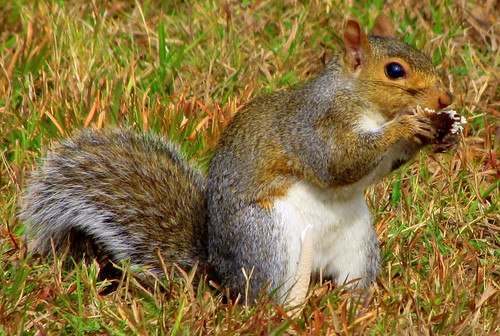People tend to feed wildlife for a variety of reasons. One main reason is that chipmunks, squirrels, and other critters look cute when they are eating.
Sometimes photographers use food to bait herons and otters to get coveted images of these creatures feeding. Others just love animals and offer them food as an act of bonding or compassion. Here is a word of advice from rangers, wildlife biologist, and others in the field; please refrain from doing this.

"Cutie Pie" can fend for himself
When a wild animal is fed by humans, its instinctive pattern for taking care of its self is interrupted. Migratory birds may not leave according to season. If done over time, mammals will not roam their territory to find food and lose some of their normal hunting and scavenging instincts. Eventually, what is created is a creature that is too reliant on people to take proper care of itself.
Animals that are fed by humans not only lose their fear, but can become aggressive. Obviously, the fearful image of a bear boldly coming upon a campsite comes to mind. Other creatures can be a major nuisance. Canada Geese will walk right up to people snapping at them demanding to be fed. Keep an eye on your snacks at a picnic table as squirrels will steal anything that looks good.Human food can also make wild animals sick.

Feed him once, he will demand more
A good way to observe wild animals is to visit a Virginia State Park. Some parks capture and display reptiles, fish, and other creaturesthrough permits from other agencies and have to be released so they can still fend for themselves. The best way to see wildlife is simply to go out and enjoy them in their natural habitat.

Master of the hunt
Directions to York River State Park: From I-64, take the Croaker Exit 231B. Go north on Route 607 (Croaker Rd.) for one mile, then right on Route 606 (Riverview Rd.) about one and a half miles to the park entrance. Take a left turn into the park.
